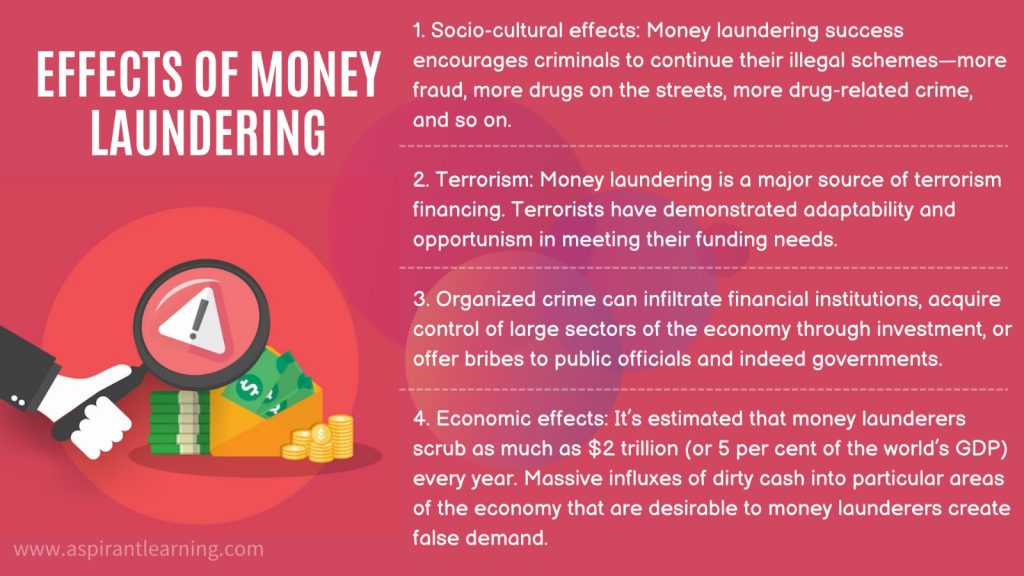News Highlights:
- The finance ministry has widened the scope of the Prevention of Money Laundering Act by tightening reporting norms of “non-profit organisations” and the rules relating to beneficial ownership.
- The changes have been brought through a notification amending the Prevention of Money-laundering (Maintenance of Records) Rules, 2005, which prescribes that reporting entities such as banks, financial institutions, and intermediaries must maintain records of all transactions of its clients, verify its clients and furnish information.
Key Amendments:
- Definition of PEPs:
- As per the amendment, politically exposed persons (PEP) are defined as- “individuals who have been entrusted with prominent public functions by a foreign country, including the heads of States or Governments, senior politicians, senior government or judicial or military officers, senior executives of state-owned corporations and important political party officials”.
- Definition of NPOs:
- The Non-profit organisation(NPOs) are defined as any entity or organisation constituted for religious or charitable purposes referred to in clause (15) of section 2 of the Income-tax Act, 1961 (43 of 1961).
- Any Organisation registered as a trust or a society under the Societies Registration Act 1860 (21 of 1860).
- Any similar State legislation or a Company registered under section 8 of the Companies Act, 2013 (18 of 2013).
- Change in ownership threshold:
- As per the amendments, any individual or group holding 10 per cent ownership in the client of a ‘reporting entity’ will now be considered a beneficial owner against the ownership threshold of 25 per cent applicable earlier.
- Now, due to the amendment, the banking/financial companies are mandated to record transactions of several entities and individuals not included in the PLMA.
- Thus, it will virtually include everyone important in politics, senior government officials and even heads of the state for financial reporting purposes under PMLA.
Regulations for reporting entities:
- Reporting on DARPAN portal:
- Reporting entities are also now required to register clients being non-profit organisations on the DARPAN portal of NITI Aayog and are mandated to maintain the registration records for a period of five years from the closure of the business relationship or closure of an account, whichever is later.
- The DARPAN portal gives a system-generated Unique ID to voluntary and non-governmental organisations upon signing up.
- The Unique ID is mandatory to apply for grants under various schemes of ministries, departments and government bodies.
- Additional information collection:
- The reporting entities must collect details of the registered office address and principal place of business of tier clients.
- So far, these entities have been maintaining KYC details or records of documents evidencing the identity of their clients as well as account files and business correspondence relating to clients. They are required to maintain a record of all transactions, including the record of all cash transactions of more than Rs 10 lakh.
- Under the anti-money laundering law, ‘reporting entities’ are banks and financial institutions, firms engaged in real estate and jewellery sectors. They also include intermediaries in casinos and crypto or virtual digital assets.

Prevention of Money Laundering Act (PMLA) 2002:
- About:
- The Prevention of Money Laundering Bill was introduced in 1998 and passed in 2002 in response to the urgent need for the adoption of comprehensive legislation for the prevention of money laundering and related activities, confiscation of proceeds of crime, the establishment of agencies and mechanisms for coordinating measures for combating money laundering, etc.
- Taking effect on July 1st, 2005, the Act was put into law.
- The objective of the Act:
- To prevent money laundering.
- To provide for confiscating property derived from or involved in money laundering.
- For matters connected in addition to that or incidental thereto.
- It forms the core of the legal framework put in place by India to combat money laundering.
- Salient features:
- Defines Money laundering.
- Expanded the reach of the Act by adding many more crimes under various legislations: It lists specific offences that would fall under this Act’s purview under the IPC, the Narcotic Drugs and Psychotropic Substances Act, the Arms Act, the Wild Life (Protection) Act, the Immoral Traffic (Prevention) Act, and the Prevention of Corruption Act.
- In instances of cross-border money laundering, it enables the Central Government to implement the UN Convention against Corruption’s provisions by returning the confiscated property to the requesting nation.
- It aims to include certain financial institutions in the Act’s reporting requirements, including Full Fledged Money Changers, Money Transfer Services, and Master Card.
Pic Courtesy: Freepik
Content Source: Financial Express



